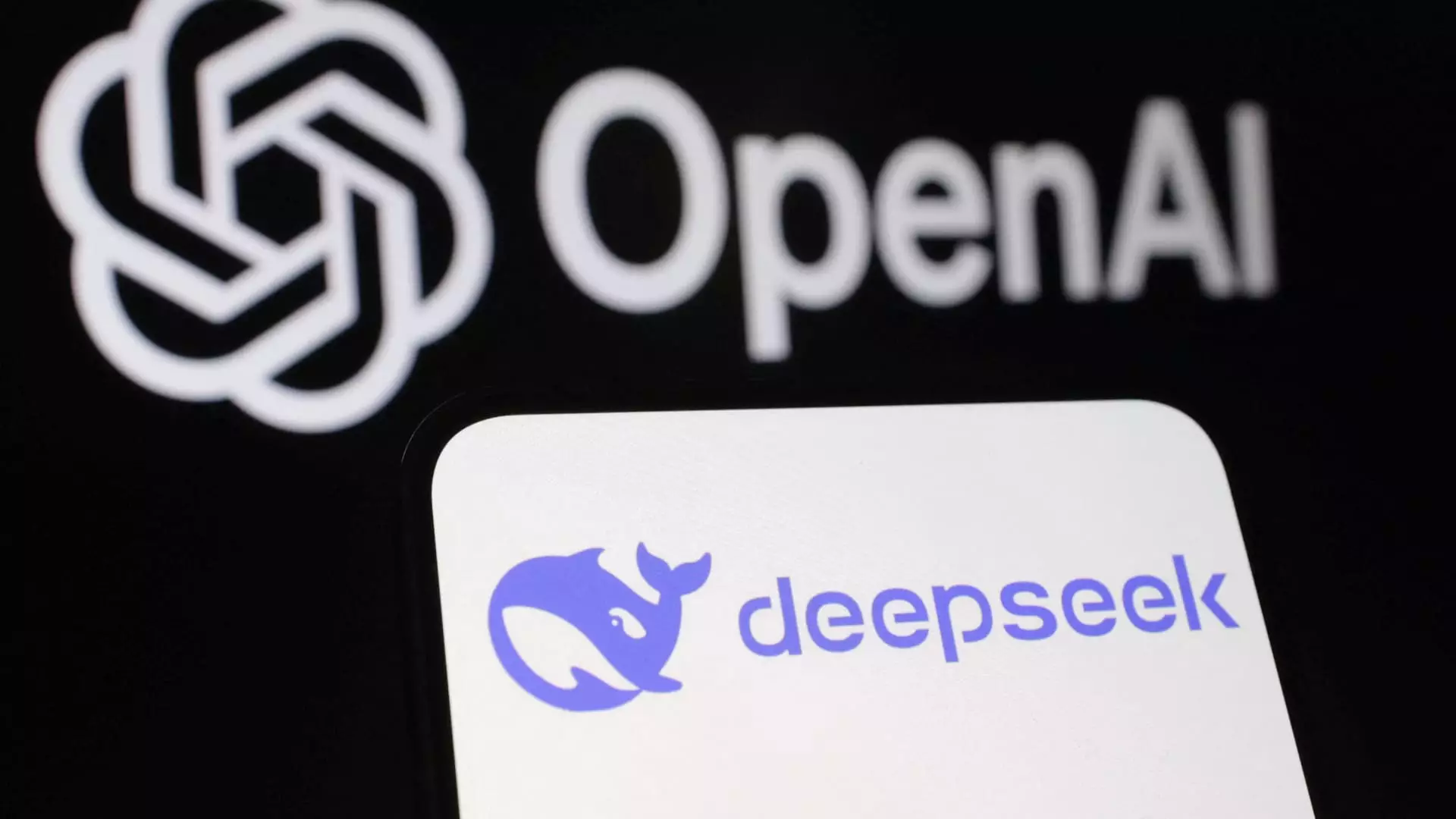In a remarkable turn of events, a relatively unknown Chinese AI startup, DeepSeek, has stirred up considerable turbulence in the U.S. technology sector. Its swift ascent has led analysts and investors to reassess the viability and sustainability of the major investments made by American tech behemoths in artificial intelligence. The company, established in May 2023 by Liang Wenfeng, has dramatically underlined the competitive landscape of AI technology, drawing attention to potential cost-effective avenues that traditional players may have overlooked.
DeepSeek’s emergence into the AI narrative has notably impacted sentiment on Wall Street. As the startup announced the availability of its innovative models, which are touted to be both cheaper to develop and more efficient than their U.S. counterparts, alarm bells rang for investors reliant on the perceived reliability of established market leaders like Nvidia and OpenAI. This dramatic shift calls into question the massive capital flows that have been underpinned by bullish projections regarding AI’s potential trajectory.
One of the central elements of DeepSeek’s value proposition lies in its large language model, which the company released just a few months post-founding, at an astonishingly low cost of approximately $6 million. Research and development of the model took place over the span of just two months, an impressive feat that showcases the startup’s agility and innovative capabilities. The highlight of their technology is its R1 reasoning model, which has demonstrated superior performance compared to OpenAI’s latest offerings in multiple independent assessments.
What sets R1 apart from existing models is its unique approach to problem-solving, employing a “chain of thought” methodology prior to arriving at final answers. This distinct mechanism enhances the overall accuracy of its responses, effectively positioning DeepSeek as a formidable player in the AI space, particularly in terms of reasoning capability—a domain many consider a significant challenge in AI development. The relative efficiency and performance of the R1 model have raised eyebrows among experts and stakeholders in Silicon Valley.
Following DeepSeek’s rise, the reactions from the stock market were immediate and severe. As investor enthusiasm for DeepSeek’s competitive edge grew, concerns arose regarding the future viability of companies heavily invested in AI technologies in the U.S., which played a significant role in the sustained bull market over the last two years. Tech stocks, led by Nvidia, saw substantial declines; Nvidia alone faced a plunge of more than 12%, indicating a fragile confidence in its market dominance.
Heightened discussions surrounding DeepSeek intensified over the weekend, particularly after endorsements from influential figures like Alexandr Wang, CEO of Scale AI, who affirmed the model’s position in relation to top American products. He not only praised R1’s performance but also shed light on DeepSeek’s unexpected possession of 50,000 Nvidia H100 chips, an integral asset for any AI enterprise. This revelation was compounded by the geopolitical context wherein the U.S. has imposed restrictions on the sale of advanced chips to China, raising eyebrows about how DeepSeek managed to acquire such technology.
The rapid ascent of DeepSeek is a cautionary tale for U.S. tech companies, illustrating how quickly the competitive landscape can pivot. With the populist reception of the R1 model in various sectors, including high-traffic mobile applications, the winds of change are unmistakable. The surging downloads and user engagement indicate that consumers are ready for alternatives to established applications like OpenAI’s ChatGPT, especially if the new entrants offer similar or enhanced capabilities at a fraction of the cost.
Analysts also highlight that the current AI ecosystem is not static; innovations can arise suddenly and disrupt long-held assumptions about market leadership. The recent shake-up has unsettled the expanding ecosystem of investors leaning heavily on AI advancements as a primary driver of value creation.
With DeepSeek’s entrance into the market, the narrative surrounding artificial intelligence is poised for a significant reshaping. Investors and industry stakeholders must reevaluate their assumptions regarding AI investment strategies moving forward. The case of DeepSeek amplifies the reality that competition in tech is fierce, and the ability to innovate quickly can level the playing field in ways that challenge the status quo. As this story unfolds, eyes will be keenly focused on how established players will respond and adapt in a landscape that has proven to be more unpredictable than ever.


Leave a Reply